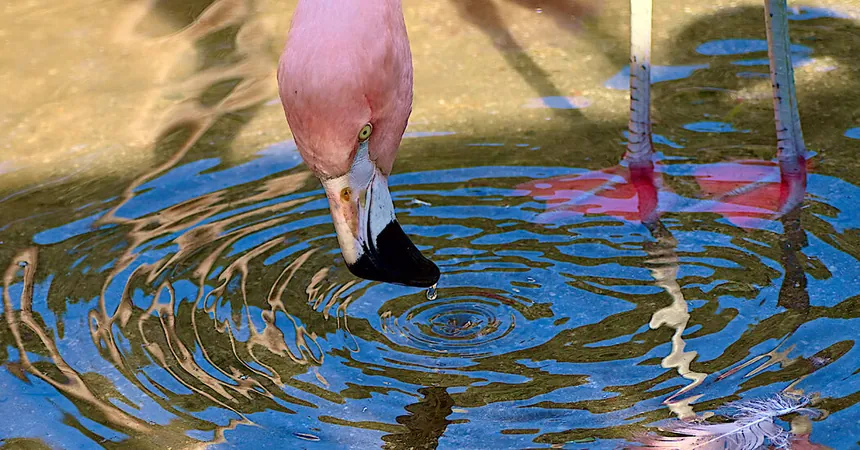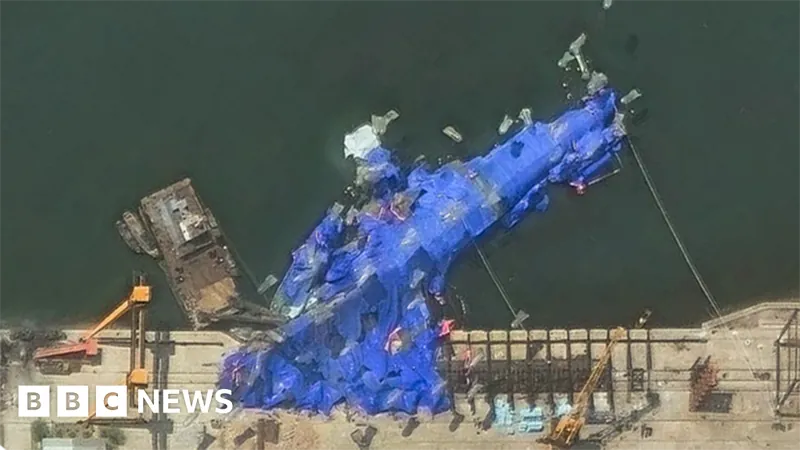
Flamingos' Ingenious Feeding Technique: Creating Underwater Vortexes to Catch Prey!
2025-05-12
Author: Ting
Unveiling the Mystique of Flamingo Feeding
Have you ever watched a flamingo feed and thought it looked somewhat bizarre? These majestic birds dip their heads into water while performing a quirky dance, all in search of tiny aquatic delicacies like crustaceans and algae. But what’s happening beneath the surface? That's the question that has fascinated scientist Victor Ortega-Jiménez since his first encounter with flamingos at the Atlanta Zoo in 2019.
The Quest for Answers
Driven by curiosity, Ortega-Jiménez, an integrative biologist at UC Berkeley, discovered a shocking lack of research on flamingo feeding mechanics. Determined to fill this gap, he embarked on a groundbreaking study, revealing that flamingos are not just passive filter feeders but cunning predators that utilize the physics of water flow to snag their prey.
The Innovative Research Methodology
Working with three well-trained flamingos—Mattie, Marty, and Cayenne—from the Nashville Zoo, the research team used high-speed cameras and fluid dynamics experiments to observe their feeding strategies. They added bubbles and food particles to visually track how water flowed around the birds as they fed.
How Flamingos Create a Feeding Frenzy
What Ortega-Jiménez and his team uncovered was astonishing: as flamingos rapidly retract their heads, they create tornado-like vortexes that elevate food particles from the bottom of the water to their mouths. Moreover, they discovered that the unique chattering motion of the flamingos’ beaks generates mini-twisters, directing these particles straight into their waiting mouths!
A Breakthrough in Understanding!
Experts like biophysicist Sunghwan Jung from Cornell University praised this research, highlighting its exceptional demonstration of how animal form and movement can manipulate the surrounding water for feeding efficiency. Additionally, evolutionary biologist Alejandro Rico-Guevara emphasized the study's importance in dispelling outdated theories about flamingo feeding habits.
Implications for the Future
Ortega-Jiménez’s findings not only unveil an innovative feeding technique but also hint at a deeper evolutionary purpose for flamingos’ webbed feet—beyond mere swimming aids. Excited by these discoveries, he now plans to investigate what’s happening inside the flamingos' beaks during feeding, aiming to inspire new technologies for addressing environmental issues like microplastic and toxic algae filtration.
Curiosity Sparks Innovation
As Ortega-Jiménez puts it, "What's at the heart of filter feeding in flamingos?" This research not only satisfies scientific curiosity but also enhances our understanding of these incredible birds and their interactions with the fluid world they inhabit. Who knows what future breakthroughs might come from studying these fascinating creatures?



 Brasil (PT)
Brasil (PT)
 Canada (EN)
Canada (EN)
 Chile (ES)
Chile (ES)
 Česko (CS)
Česko (CS)
 대한민국 (KO)
대한민국 (KO)
 España (ES)
España (ES)
 France (FR)
France (FR)
 Hong Kong (EN)
Hong Kong (EN)
 Italia (IT)
Italia (IT)
 日本 (JA)
日本 (JA)
 Magyarország (HU)
Magyarország (HU)
 Norge (NO)
Norge (NO)
 Polska (PL)
Polska (PL)
 Schweiz (DE)
Schweiz (DE)
 Singapore (EN)
Singapore (EN)
 Sverige (SV)
Sverige (SV)
 Suomi (FI)
Suomi (FI)
 Türkiye (TR)
Türkiye (TR)
 الإمارات العربية المتحدة (AR)
الإمارات العربية المتحدة (AR)